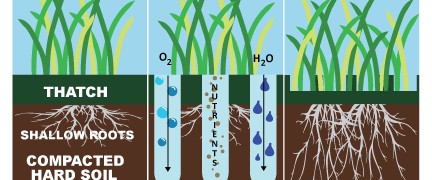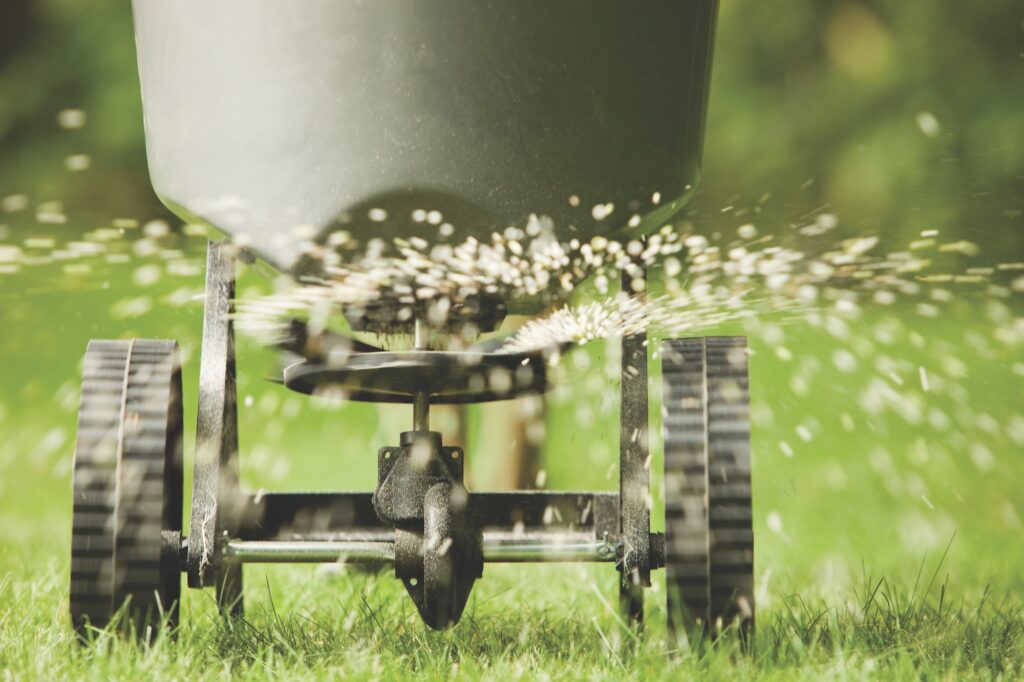Fall Aeration and Seeding

Aeration is the process of removing a plug or a core of soil and leaving it on the surface to break down. This helps the soil become less compact and allows for air, water and fertilizer to reach the roots of the grass, which will create a thicker and healthier lawn. When the roots get more air flow, water and fertilizer it will stimulate growth and will cause the roots to grow deeper. When you have a good root system established your grass will be healthier. This can also help reduce the amount of thatch that will build up in your lawn.
Overseeding your lawn after an aeration is extremely beneficial. This will help fill in any thin or bare areas you have in your lawn. By having a thick, healthy stand of turf grass this will help prevent weeds and crab grass from being able to germinate in your lawn.
We recommend aerating and seeding during the fall when temperatures are starting to cool down and are steady for a few months. If you would like to get scheduled, please contact our office at 816-662-2222.


